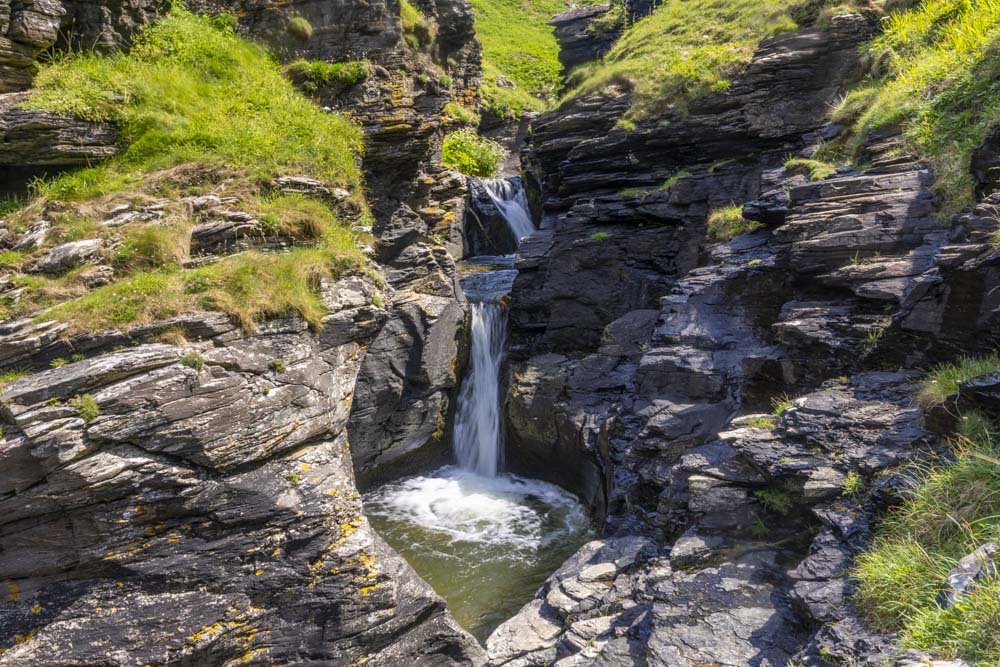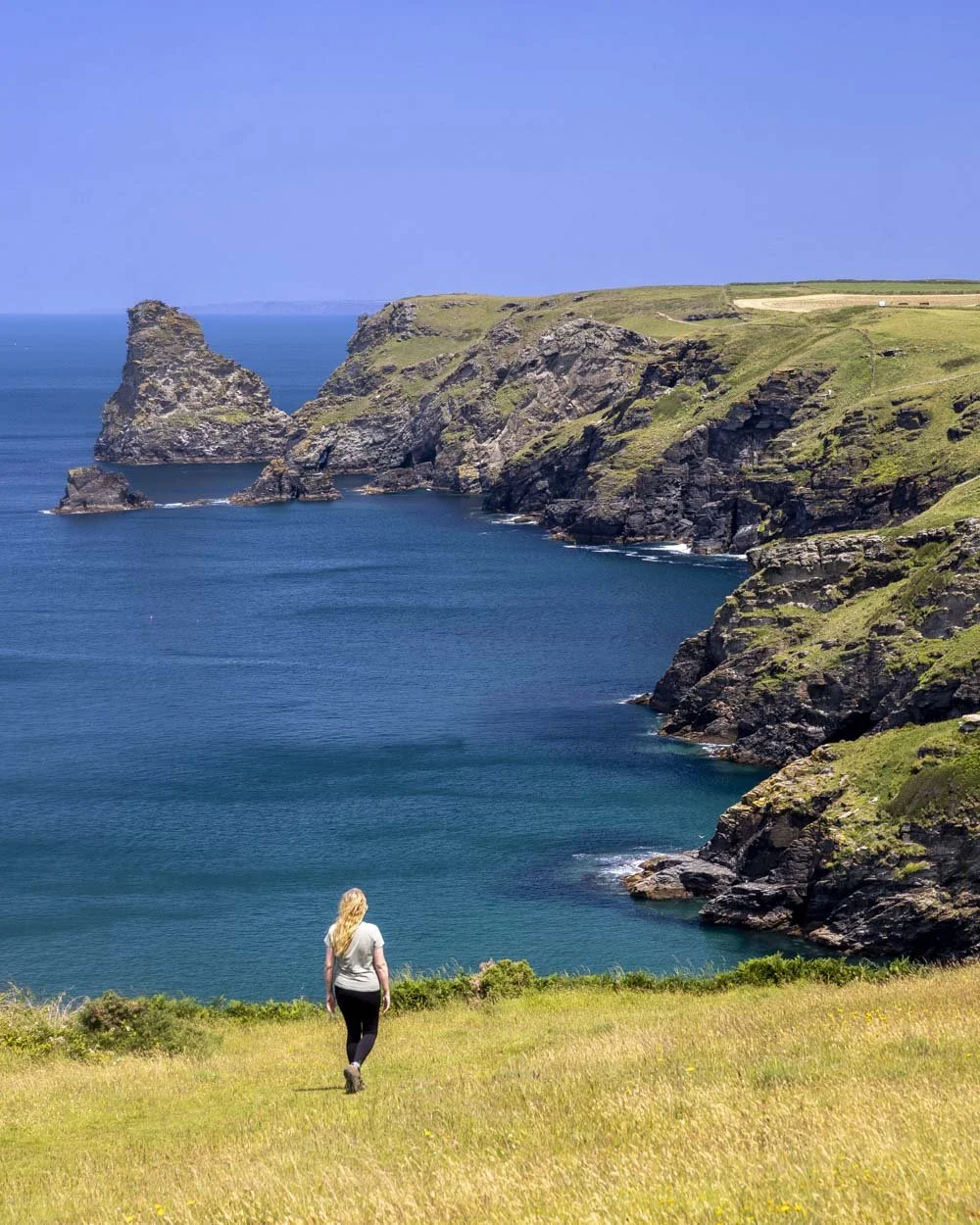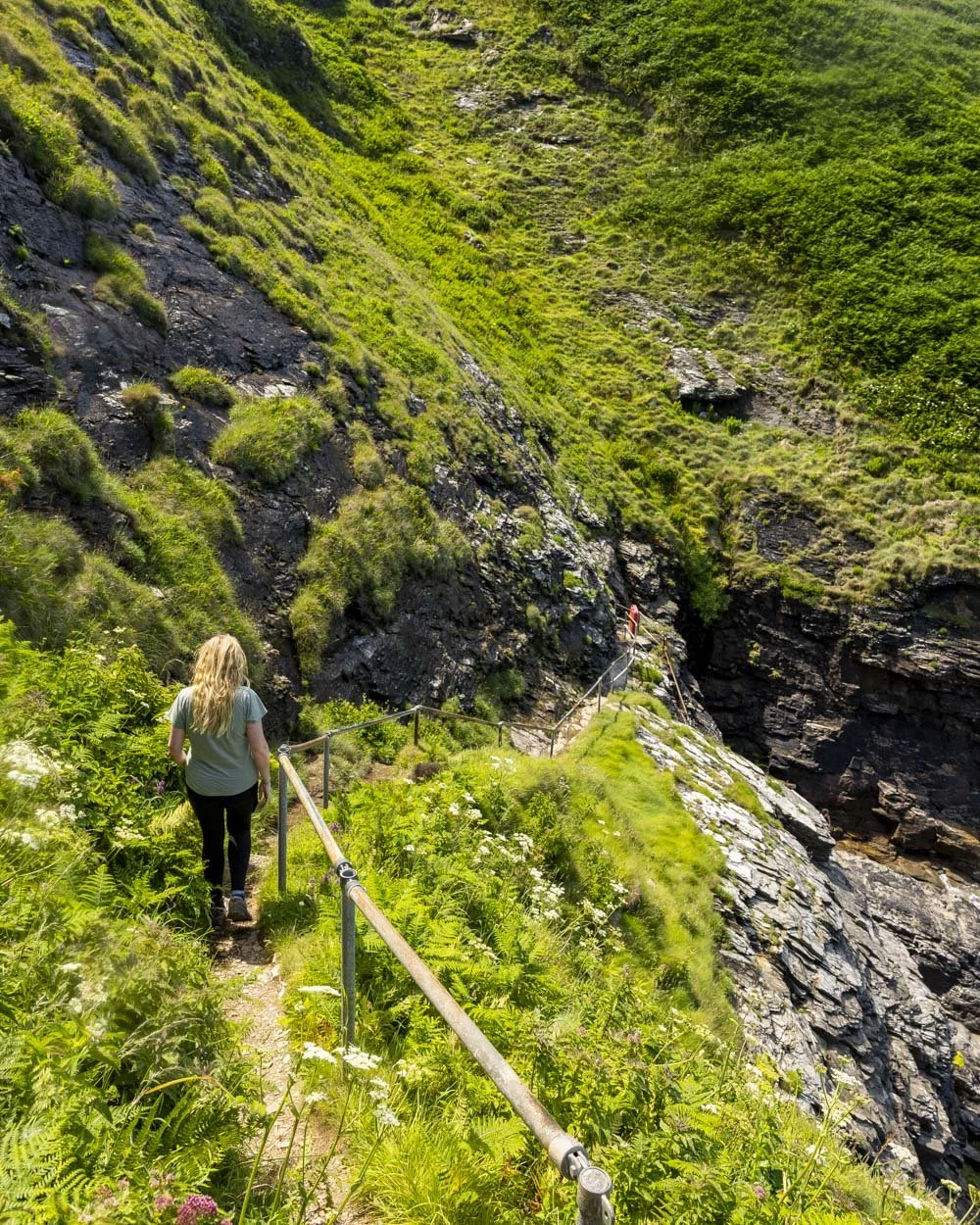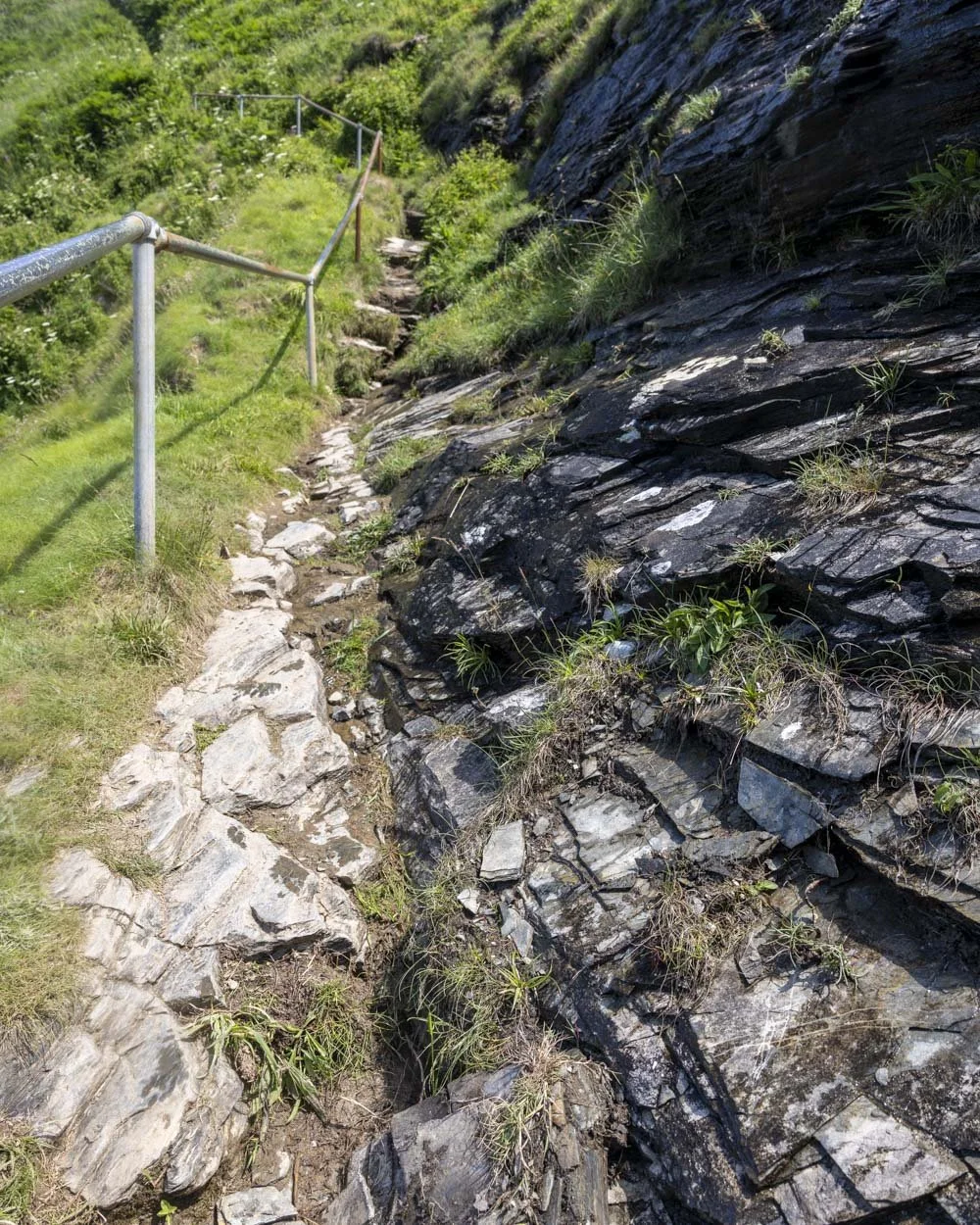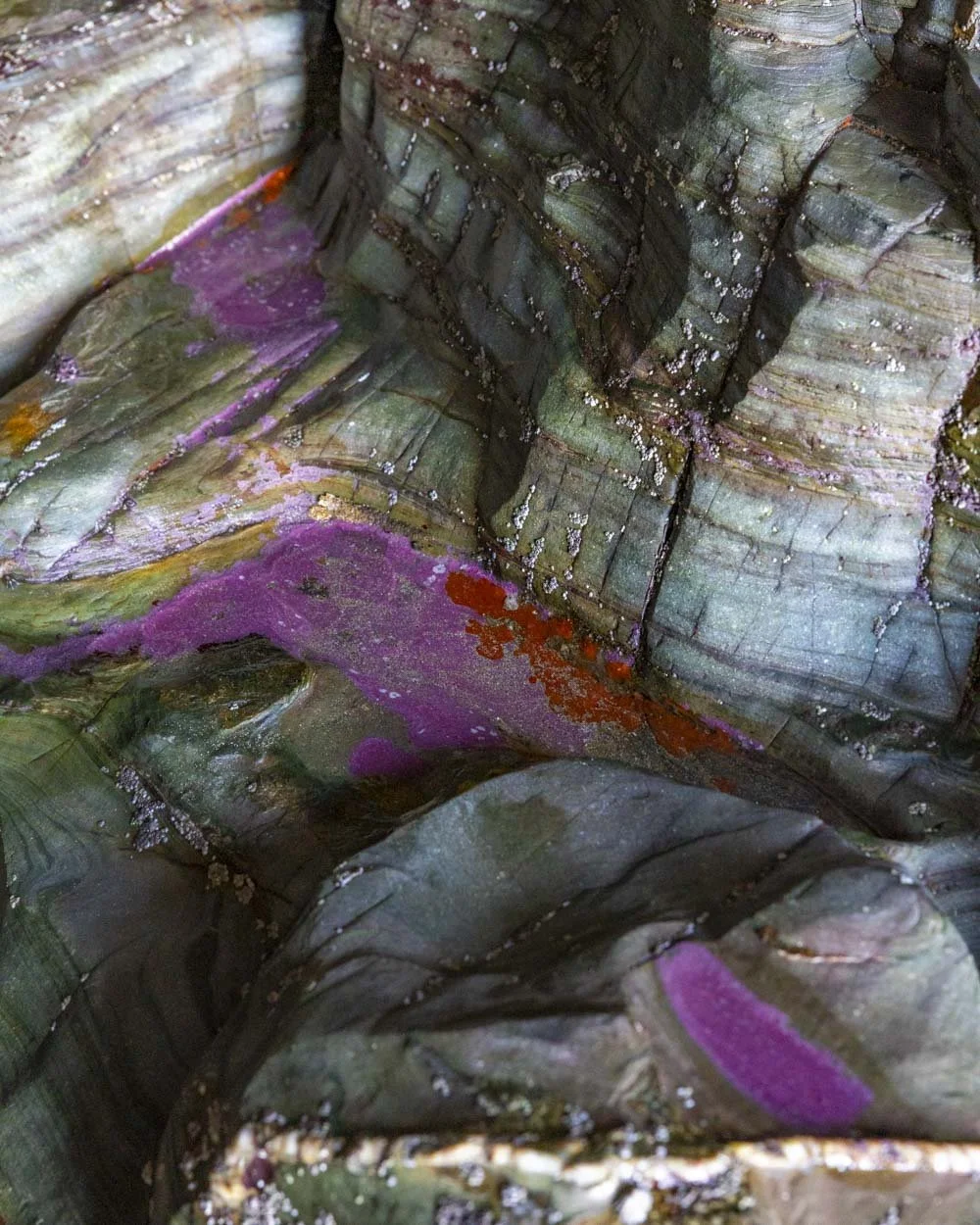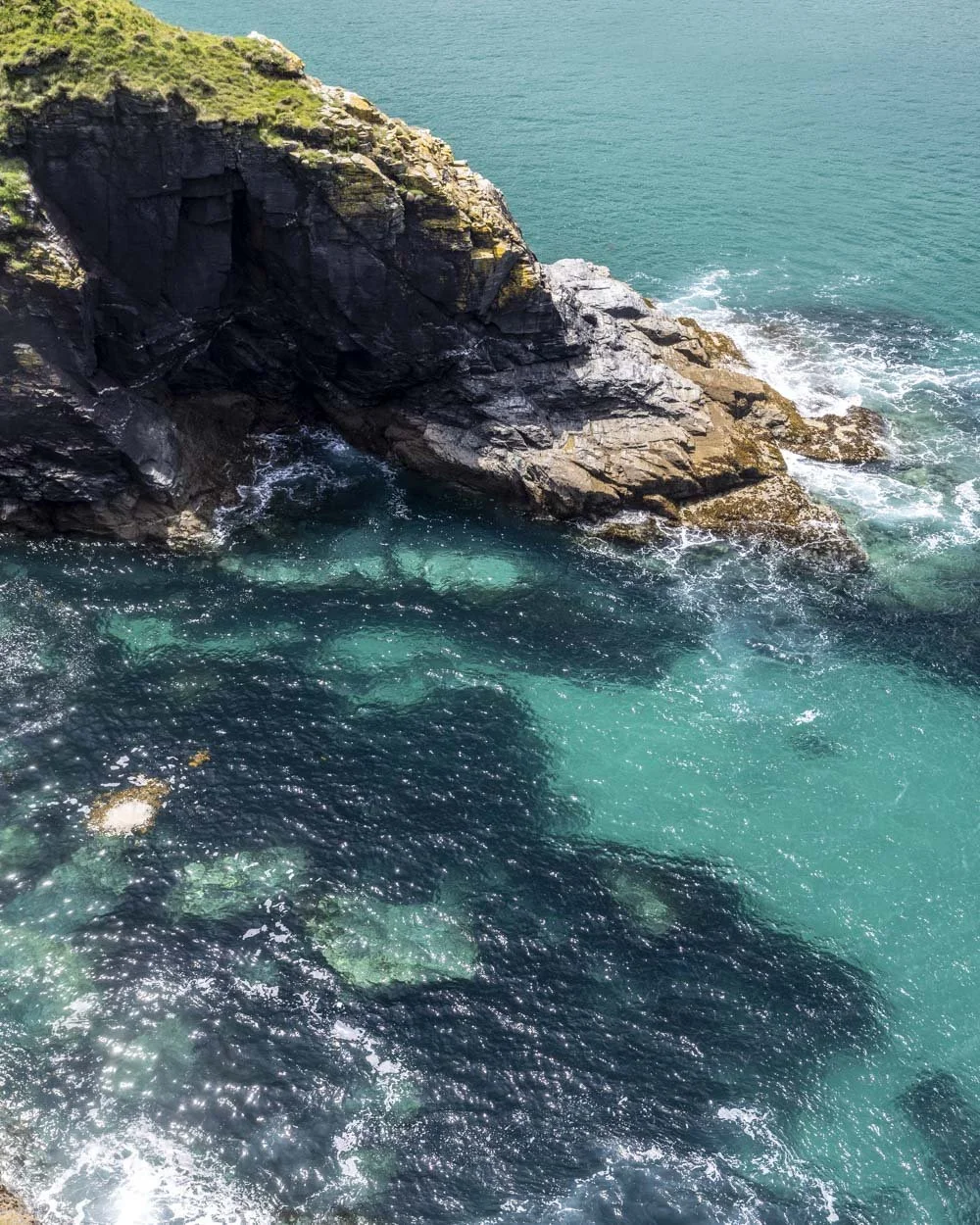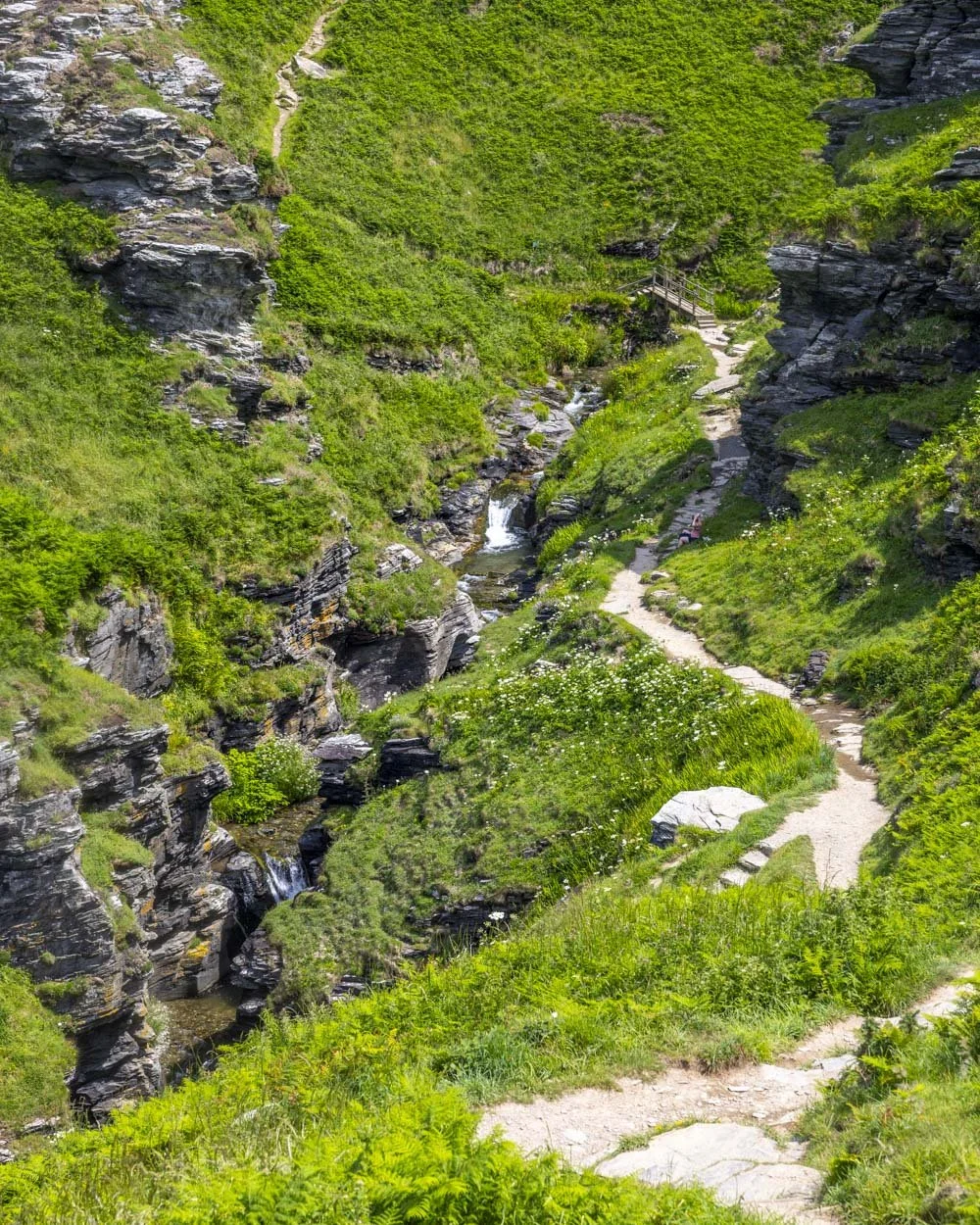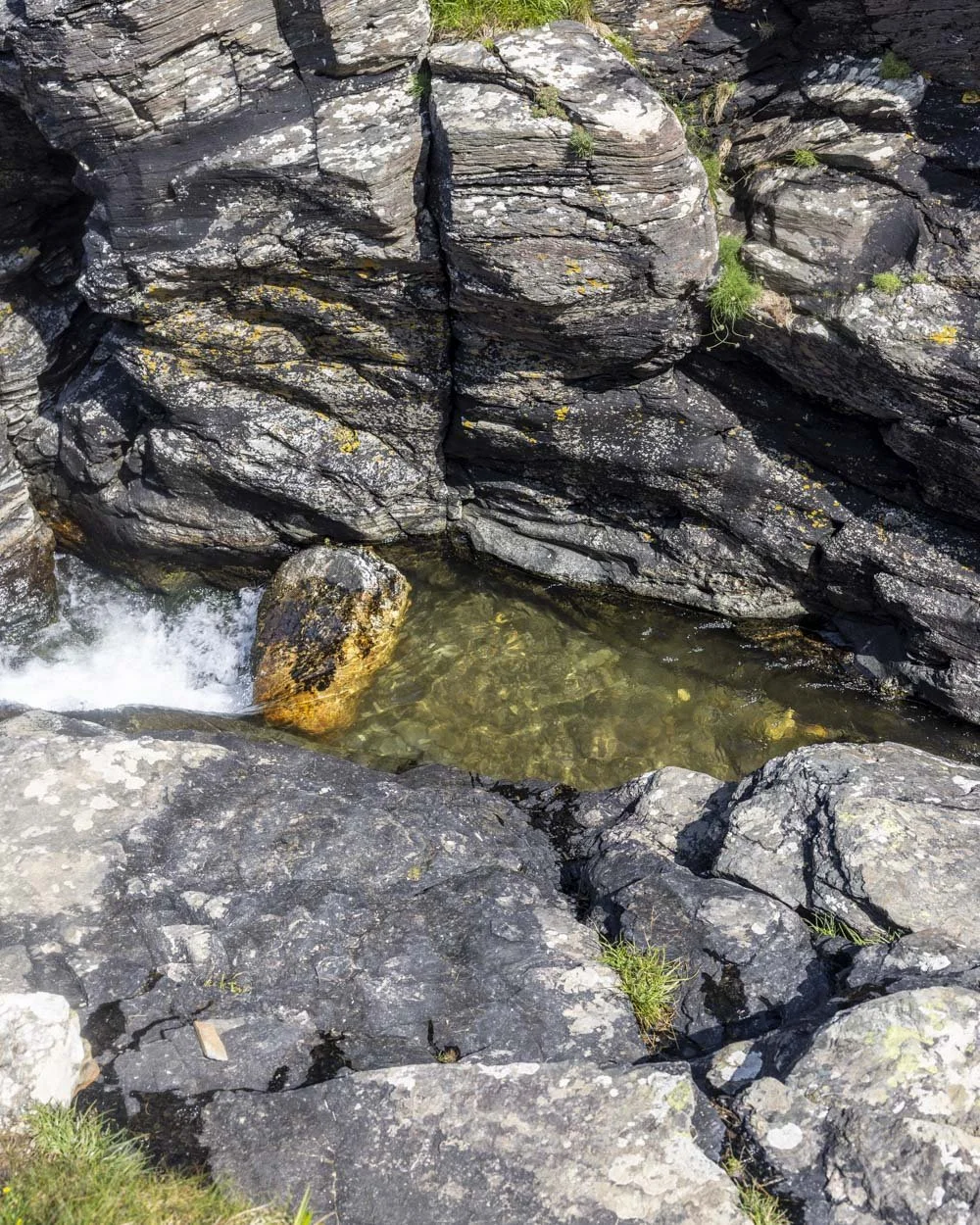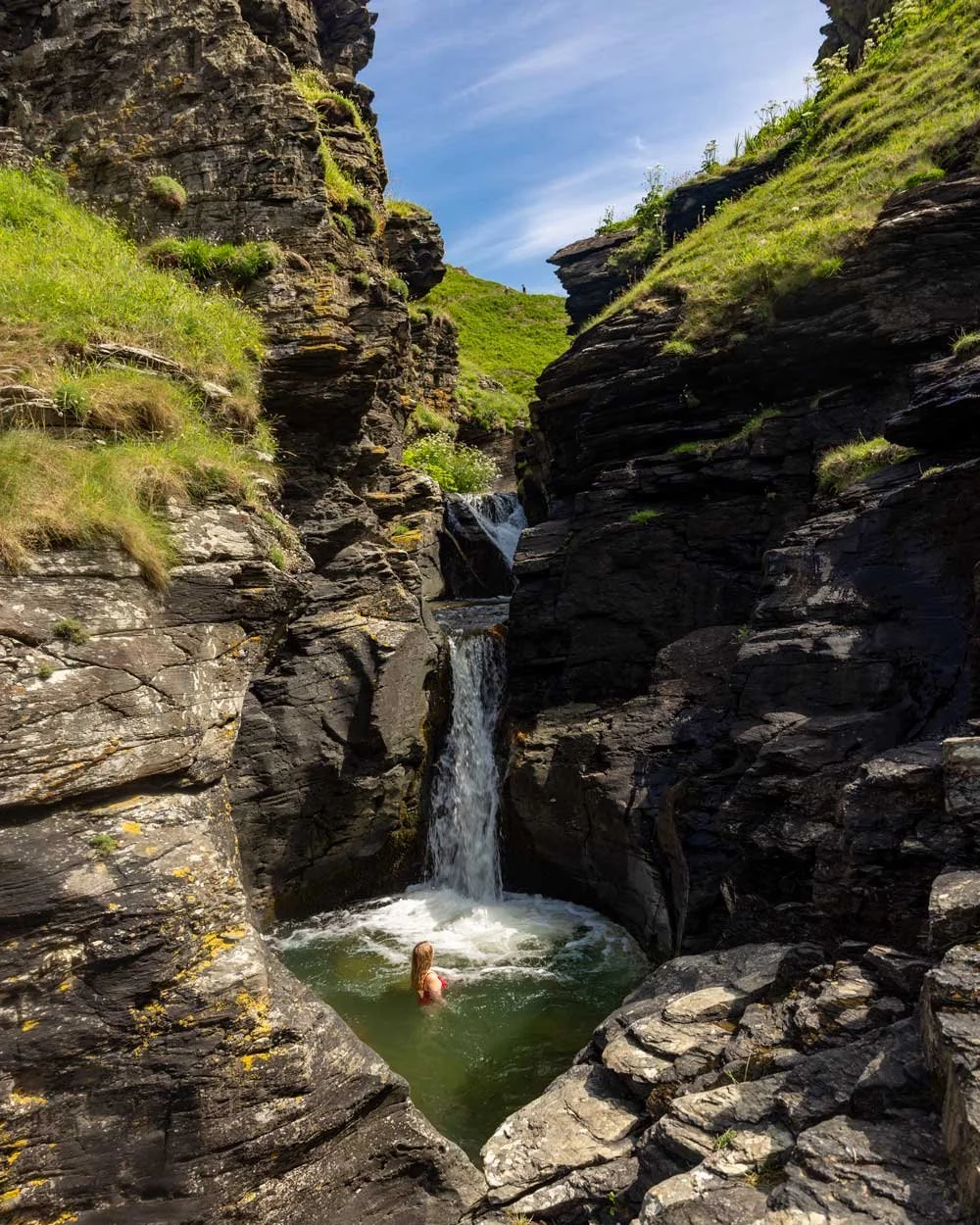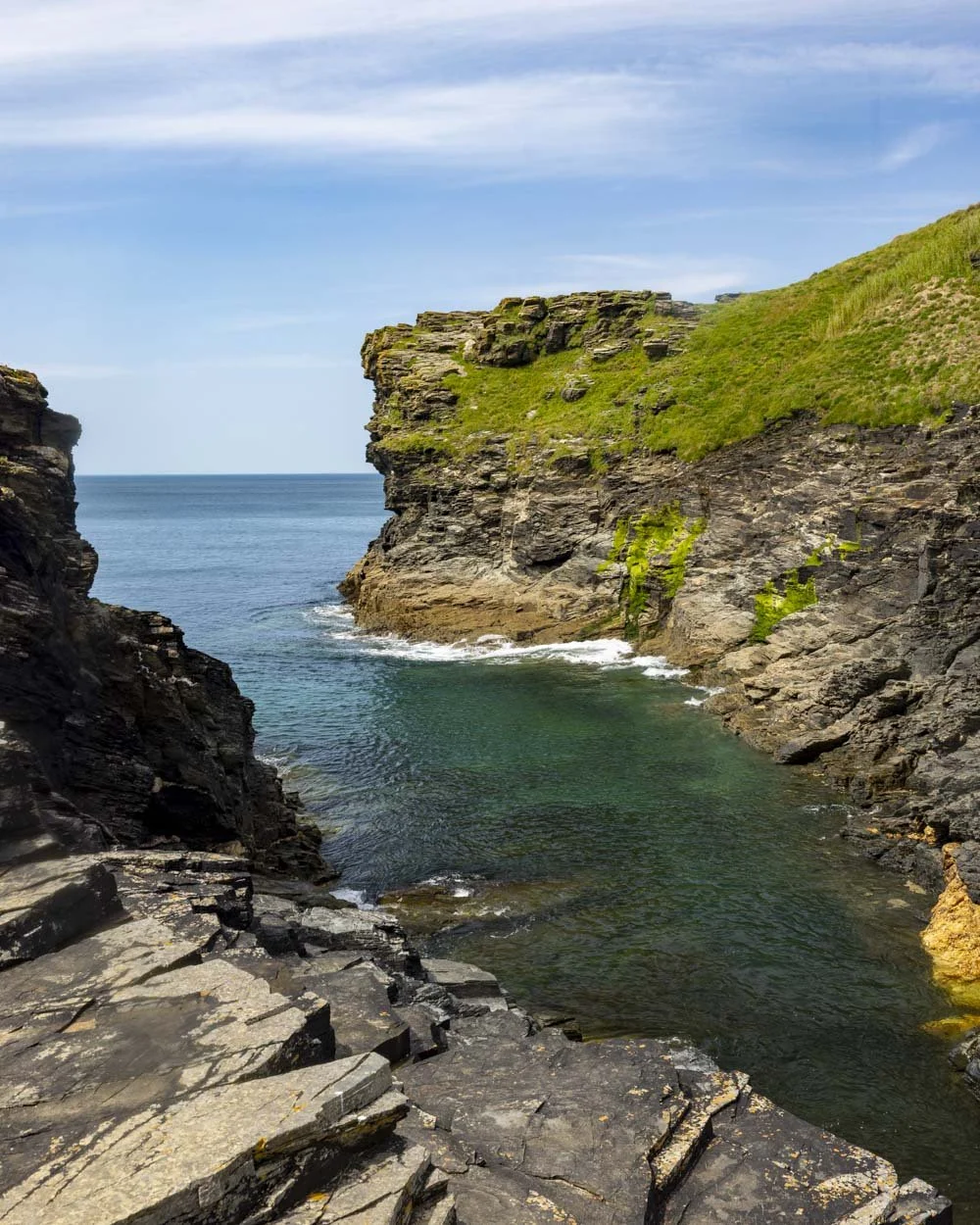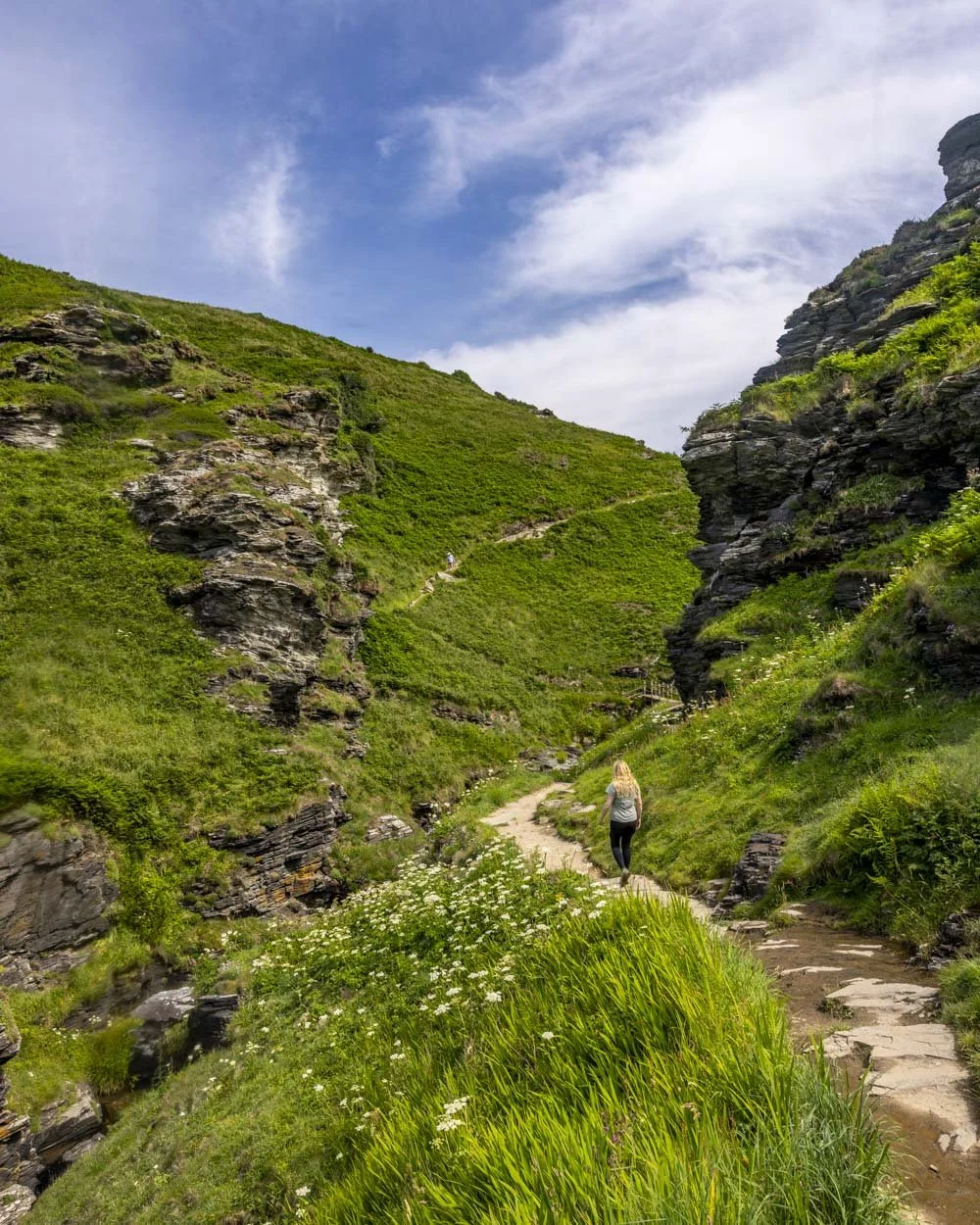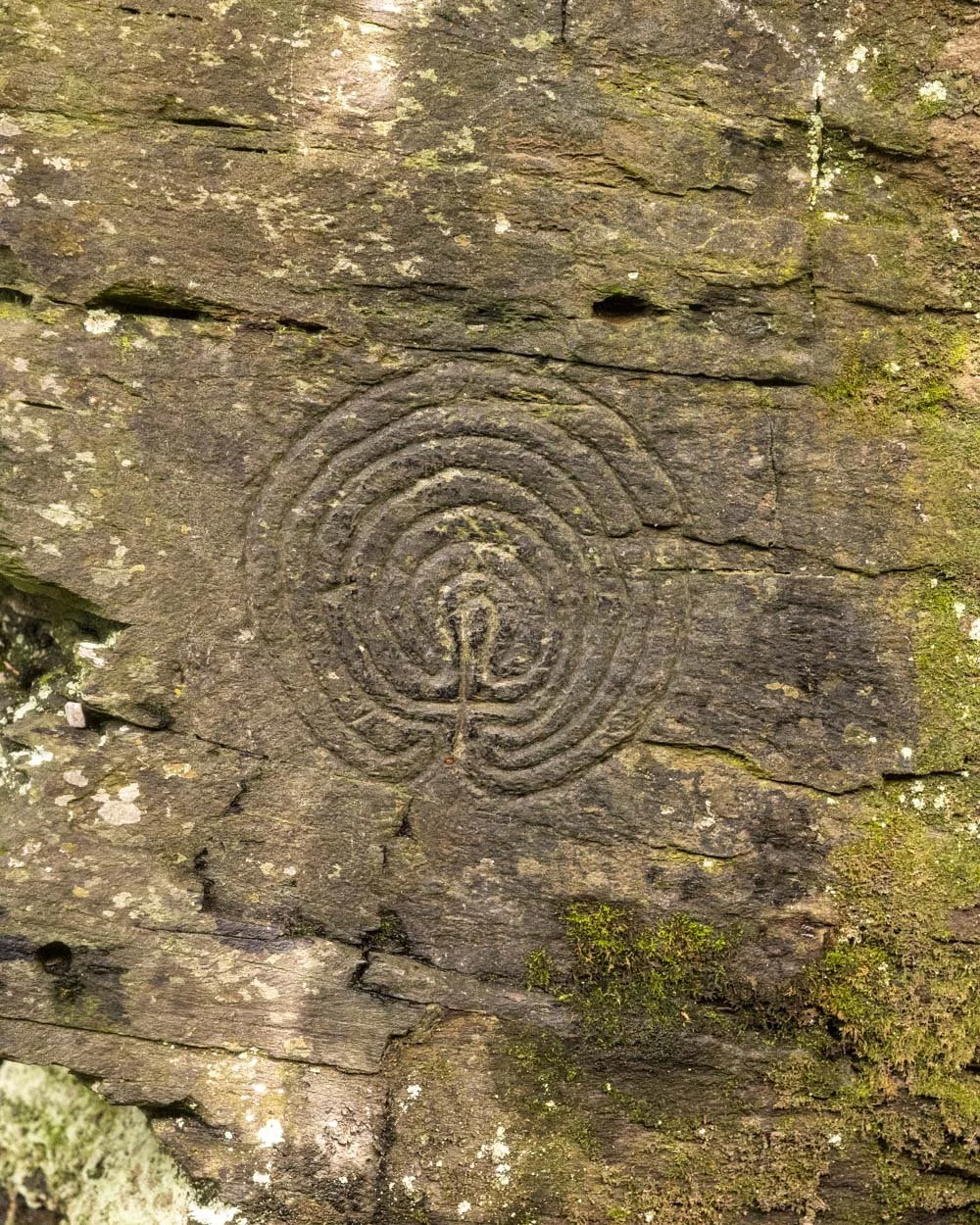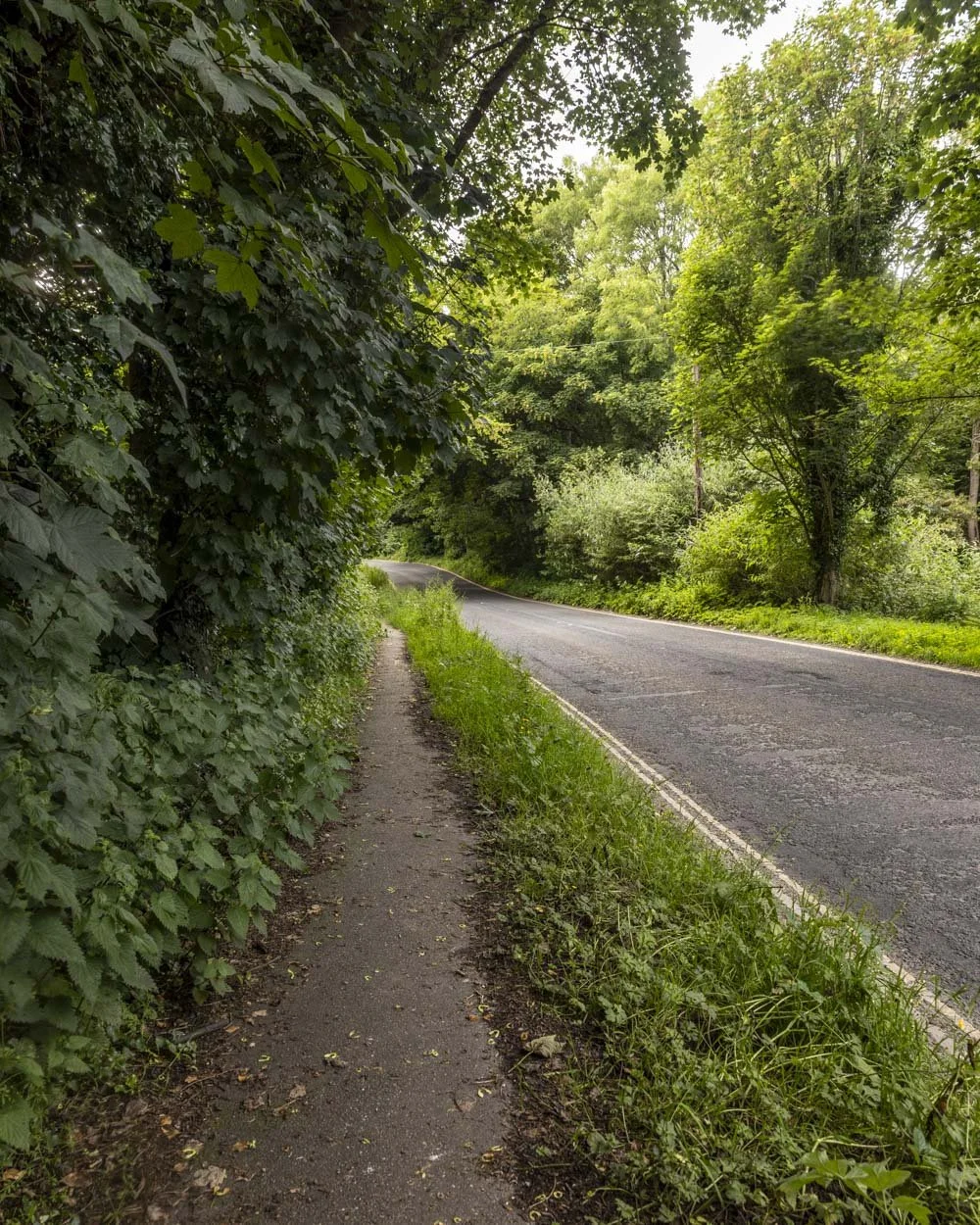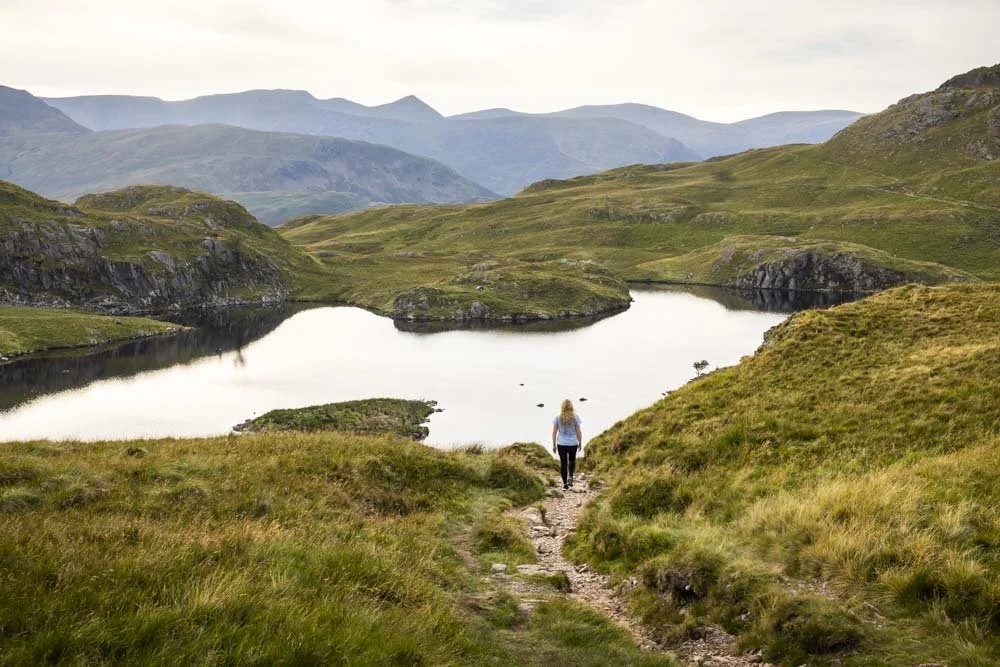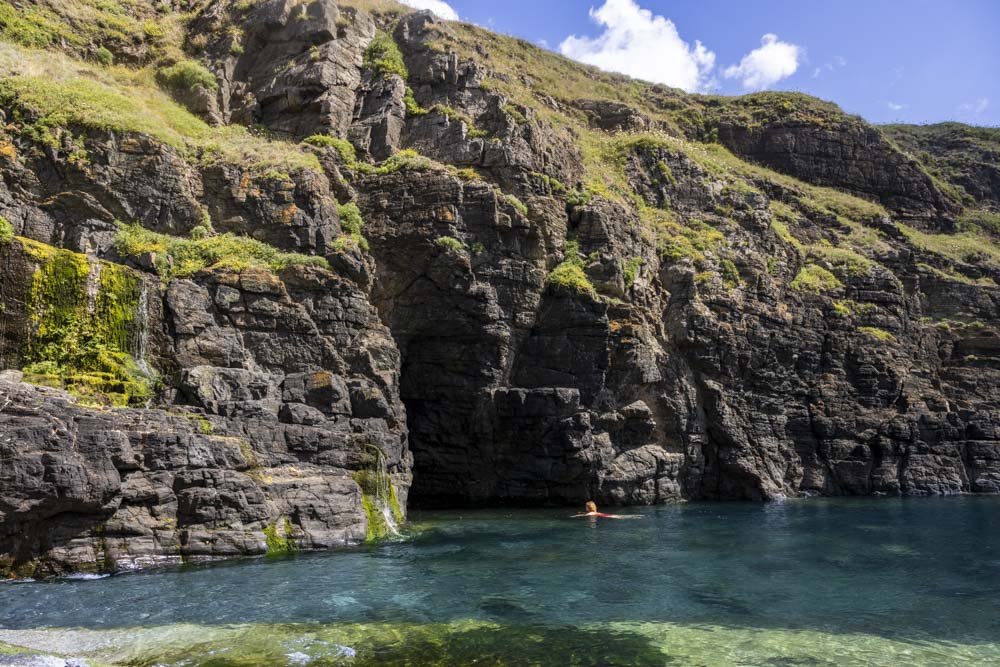The Rocky Valley circular track is one of the best short walks in Cornwall. You’ll pass turquoise coves that wouldn’t look out of place in Greece, a wild gorge waterfall with a plunge pool just big enough for a dip and finish in woodland which hides the ruins of an old flour mill and petroglyphs thought to be over 3000 years old. All that and the walk is less than 2 miles (3km) long!
We were utterly blown away by the beauty and diversity of the trail. If you can, pick a sunny day and prepare to be awestruck.
Here’s everything you need to know about the Rocky Valley Walk.
The Rocky Valley Circular Walk
The stats
Distance: 1.8 miles (2.9km) circuit
Elevation gain: 180m
Difficulty: Easy - moderate
Trailhead: Bossiney Cove Car Park, Bossiney
Summary: The Rocky Valley Walk is generally all on a good path, but sections can become muddy after rain. If you’re planning to take the short optional detour down to Benoath Cove you need to pick a dry day.
This path is narrow and exposed and would be very slippery when wet. The final descent down the rock shelf is aided by a fixed rope.
Without this detour none of the terrain is tricky. There are some ups and downs, but no long sustained climbs. The final 0.4 miles (600m) is on a road which has a narrow pavement.
It’s a relatively quiet road, but if you don’t like the sound of it you may wish to retrace your steps rather than make a circuit.
Starting the trail: joining the coast path
From the parking area (full details below) the trail begins by passing through the gate and heading right at the fork. You’ll now begin walking down a grassy hill with ever more spectacular views the closer you get to the coast path.
With rugged cliffs, sea stacks and two tone turquoise and indigo water, it’s fair to say it’s up there with the most amazing views in all of Cornwall.
Approximately 350m after you left the car park you will reach the coast path and head right. Roughly 80m later you will see a narrow social trail on the left, this is the route down to Benoath Cove.
The detour to Benoath Cove
The detour down to Benoath Cove is the only part of the walk where the terrain is tricky and it won’t be for everyone. It’s only 280m each way, but it is narrow and exposed and I wouldn’t go near it if the ground is wet or muddy.
When dry it’s manageable if you don’t suffer from vertigo!
It begins easily enough with a dirt trail between dense bracken. You are going downhill but it’s not exposed and footing is generally good.
After 120m the arch we thought looked a bit like an elephant truck will come into view far below you and the views of the crystal clear water are somehow even more mesmerising. It’s worth noting the water colour changes with the tides and having seen it many times, we think mid tide and just after is when it is at its most spectacular.
The trail slopes downhill, but it’s quite firm ground and not too steep, however, this next section has a large drop to the right.
It’s only 25m long though and then you will reach some rough cut stone stairs which make footing easier, though the track becomes steeper.
This section lasts for roughly 55m before you reach a handrail and the gradient slackens.
At first I thought it was a strange decision to have the handrail on a shallower section and then I realised it’s because the stones underfoot have been worn smooth and are quite slippery.
Without the railing it would feel very exposed. After 40m you reach a section of slanted rock with a rail and rope.
There are rough stairs at first and then the final few metres are just slanted rock, which is where the rope comes in. The slope is tiered, but It is quite slippery so take care.
At this point what you will see depends entirely on the tide. Just after mid tide and at high tide there will be water right up to the rocks.
At low tide there is a large sandy beach. Low tide makes swimming easier as at high tide, even when the sea is calm, the waves do roll in with some force around the rocks.
A little after mid tide
Low Tide
This makes it trickier to get into the water as you don’t want to get pushed against the rocks.
A couple of hours either side of low tide you can just walk in off the sand and you will also have the chance to explore some pretty incredible sea caves, the pink coralline inside the largest one is absolutely superb.
When you’re ready to leave the cove you retrace your steps back to the coast path. It’s easier on the way up as you don’t feel like you will slip when going uphill.
Heading to Rocky Valley Waterfall
Once you’re back on the main coast path, you continue following the cliff tops on a narrow gravel path. The views are simply sensational.
Roughly 400m from the junction with the track down to Benoath Cove there’s a bench seat if you want to sit and admire the scenery.
Just 100m later there’s a signpost pointing you downhill towards Rocky Valley. You’ll head down the steps and make a left turn 150m later.
You will now see the incredible gorge with it’s beautifully sculpted rock walls and clear green pools.
You can see the waterfall easily from here, though heading right for 20m will get you closer. The path is a little rocky, but easy enough when dry.
Accessing the Rocky Valley Waterfall
Rocky Valley Waterfall has a gorgeous clear plunge pool at the base, which is bigger than it looks in photos. In fact, it’s bigger than it looks until you’re actually inside it, as you can’t see half the pool from above.
It’s a spectacular place for a dip, but if the waterfall is flowing well then it’s not the easiest place to access and I wouldn’t recommend it if you’re not confident with a bit of scrambling.
The easiest route into the pool is via the tiered rocks that lead down to the small rock channel just before the main waterfall pool (the shallowest gradient is at the very far left).
The rock is grippy when dry and best navigated by sitting down and lowering yourself one tier at a time. You will then be standing in very shallow water.
The water is easy to walk through up until the very last bit before you climb into the waterfall pool. At this point you need to keep out of the main flow of the water which is very powerful. You can use the little step to the left to climb up and into the main pool avoiding the fast flowing water.
But do note it’s much easier to get into the pool than out of it again. Climbing out when the flow is high is most easily done by carefully using that same step and then crab walking along the first little bit of the narrow pool so you can drop in outside of the main current.
You need to think of it as a tiny little bit of gorge walking and care must be taken so the water doesn’t knock you into the rocks.
Swimming at Rocky Valley Waterfall
Once inside the pool it’s magical! It feels like you’re in a proper little slot canyon waterfall and when you are in the left side of the pool no can see you from the track, so you feel like it’s your own secret spot.
The water is deep but I could still touch the bottom in most of the pool. There are some handily place rocks which make for a great perch outside of the main flow of the falls, however, these rocks do mean there isn’t enough room to swim.
Still, when it comes to a jaw-dropping and invigorating plunge, it’s a winner. The water is also clearer and a more stunning shade of green from inside the pool than it appears from the outside. I wish I’d had a Gopro with me to really capture it.
Be careful when exiting the pool that you keep to the far right side, outside the main current, as though the drop into the rock channel is not big, if the force of the water takes you over the edge into the next pool it could lead to injury.
Finishing the circuit: through the woods to the mill ruin and petroglyphs
Before you continue on the circuit you can head a little to the left to see the full gorge, which empties out into the sea. It’s just a minute’s detour and well worth a look.
There’s a sign about dangerous waves, so you should exercise caution if the swell is up, but on our visit it was as still as a millpond!
After enjoying the view you head back onto the main trail and up the stairs to the little bridge over the river. Don’t cross the bridge and instead follow the path to the right of the river.
This flat leisurely stretch of track is gorgeous, with lots of little cut downs to the water if you want to have a paddle. After 200m you’ll arrive at another small bridge and the remains of the Trewethet Mill.
It’s partially ivy clad and very atmospheric, you can wander inside what’s left of the ruin.
You’ll also see two very clear early Bronze Age petroglyphs on one of the stone walls, they are thought to have been created somewhere between 1800-1400 BC and are marked by a plaque.
The path continues a few minutes further along the river to some cascades, but the main track continues through the ruins and then briefly uphill before it flattens as you follow the stream.
You’ll pass by a beautiful stone house that we noticed was available as a holiday let which would make for a pretty spectacular location to stay!
From the house you’ll follow the quiet country lane sharply uphill for 100m before reaching the main road.
From here you need to walk for 600m (0.4 miles) along the main road back to your car.
There is a very narrow pavement with a few encroaching stinging nettles, it’s not the nicest ending to the trail, but it doesn’t detract from this being one of the best short walks in Cornwall.
Parking for the Rocky Valley Circular Walk
There are two different places you can park for this walk, both are currently free of charge. The first is where we parked, beginning at the coast, which is at the Bossiney Cove car park, postcode PL34 0AY, which you can see here on Google maps. This car park has toilet facilities. If it’s full there is an additional large field beside it where you can park at for £1 a day.
The second option has more limited parking, at a lay-by half a mile further down the B3263, which you can see on Google maps here. It fills up quickly in peak season. This is the lay-by that you come to when you have climbed uphill to the road from the holiday let.
Both parking areas are about a 1-1.5 miles and a 5 minute drive from Tintagel.
Keep them wild
Please remember to take all rubbish with you and keep these places wild and pristine - as with anywhere in the outdoors. It’s important to leave them exactly as you found them so they will remain beautiful for generations to come.
Litter tends to breed litter, so if you do spot any and are able to pick it up and dispose of it outside the area, it will go a long way to keeping the area clean.
This post may contain affiliate links, meaning at no additional cost to you, that we will earn a small commission if you click through and decide to make a purchase. This helps towards the costs of running our website. Thanks for your support.
